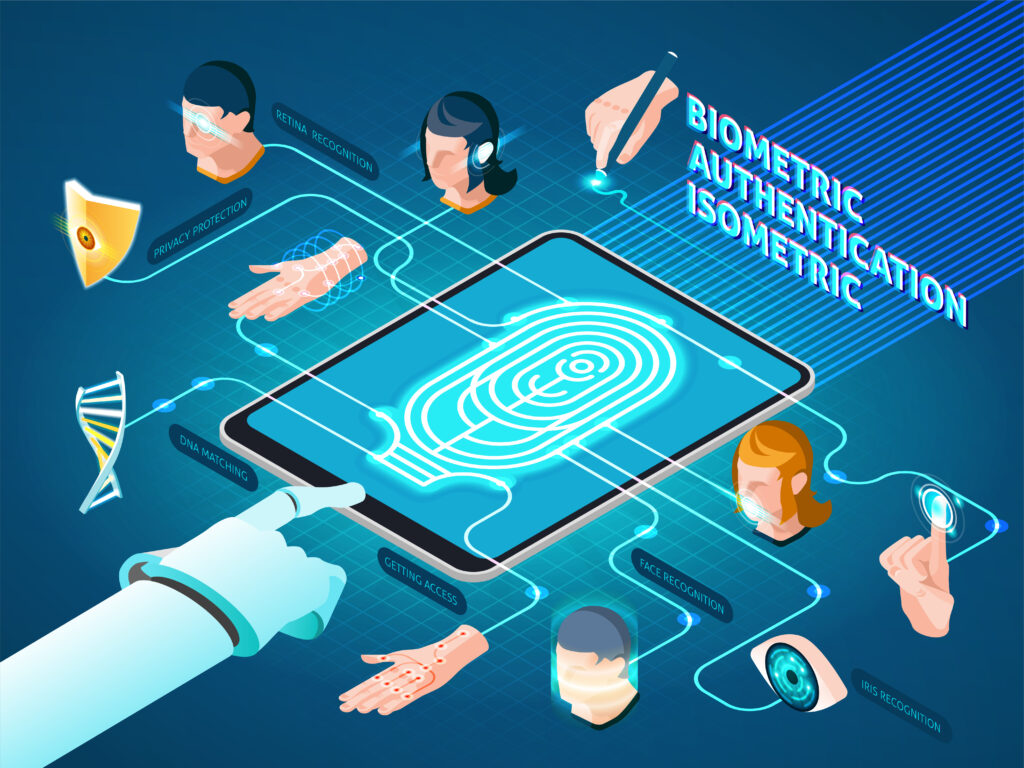In a world where digital security is more critical than ever, traditional methods of authentication, such as passwords and PINs, have proven to be increasingly vulnerable to cyberattacks. As a result, the need for more robust and foolproof authentication methods has become evident. This is where biometric authentication steps in as a game-changer. In this article, we will explore the world of biometric authentication, its advantages, and why it is considered the future of secure access.

What Is Biometric Authentication?
Biometric authentication is a security process that uses unique physical or behavioral characteristics of individuals to verify their identity. Unlike passwords or PINs, which can be forgotten, stolen, or shared, biometric data is inherently personal and difficult to replicate. Here are some of the most commonly used biometric identifiers:
-
Fingerprint Recognition: This involves scanning and matching the unique patterns of ridges and valleys on a person’s fingertip.
-
Facial Recognition: Facial biometrics use algorithms to identify individuals based on the unique features of their face, such as the arrangement of eyes, nose, and mouth.
-
Iris Recognition: Iris scanning captures the intricate patterns within the colored part of the eye (the iris) and is known for its accuracy.
-
Voice Recognition: Voice biometrics analyze the unique vocal characteristics, including pitch, tone, and speaking patterns, to identify a person.
-
Palmprint Recognition: Similar to fingerprint recognition, palmprint recognition uses the unique patterns on an individual’s palm for authentication.
-
Behavioral Biometrics: This category includes authentication methods like typing pattern recognition, which identifies users based on how they type on a keyboard or touchscreen.
Advantages of Biometric Authentication
-
Uniqueness: Each person’s biometric data is unique, making it extremely difficult for fraudsters to replicate.
-
Non-Transferable: Biometric data cannot be easily shared, stolen, or forgotten, unlike passwords or PINs.
-
Convenience: Biometric authentication is often more convenient for users, as it eliminates the need to remember and enter complex passwords.
-
Enhanced Security: Biometric systems provide a higher level of security compared to traditional authentication methods, as the biometric traits are difficult to forge.
-
Fast and Efficient: Biometric authentication is typically quick and requires minimal user effort, making it ideal for applications like unlocking smartphones or accessing secure facilities.
-
Reduced Fraud: Biometrics can significantly reduce fraud and identity theft, as they provide a more accurate means of verifying identity.
Applications of Biometric Authentication
Biometric authentication has found applications across various industries and sectors:
-
Smartphones: Most modern smartphones offer fingerprint, facial, or iris recognition for unlocking devices and securing sensitive data.
-
Banking and Finance: Biometrics are used for secure mobile banking, ATM withdrawals, and authorizing financial transactions.
-
Healthcare: Biometric authentication ensures secure access to electronic health records, patient data, and controlled substances.
-
Travel and Immigration: Biometrics are used at border control and immigration checkpoints for passport verification and identity confirmation.
-
Access Control: Biometrics are widely used to secure physical facilities, data centers, and restricted areas.
-
Payment Systems: Some payment systems enable users to make transactions by scanning their fingerprints or faces.
Challenges and Concerns
While biometric authentication offers significant advantages, there are also challenges and concerns associated with its adoption:
-
Privacy: Storing biometric data raises privacy concerns, as it is highly personal and sensitive information. Data breaches could have severe consequences.
-
False Positives and Negatives: Biometric systems may occasionally produce false positives (incorrectly accepting unauthorized users) or false negatives (incorrectly rejecting authorized users).
-
Spoofing: Despite its security advantages, biometric data can be spoofed or tricked using various methods, such as creating fake fingerprints or photos for facial recognition.
-
Cost: Implementing biometric authentication systems can be costly, especially for small businesses.
-
Regulatory Compliance: Handling biometric data often requires strict compliance with data protection and privacy regulations.
The Future of Biometric Authentication
As technology continues to advance, biometric authentication is poised to play an even more significant role in securing our digital lives. Here are some trends and developments shaping the future of biometric authentication:
-
Multi-Modal Biometrics: Combining multiple biometric identifiers, such as fingerprint and facial recognition, for enhanced security and accuracy.
-
Continuous Authentication: Implementing systems that continuously monitor and verify users’ identities during their entire session, rather than just during login.
-
Contactless Authentication: The rise of touchless biometric authentication methods, which are particularly relevant in a post-pandemic world.
-
Blockchain Integration: The use of blockchain technology to securely store and manage biometric data, giving users greater control and ownership over their data.
-
Behavioral Biometrics: The increased adoption of behavioral biometrics, which analyze user behavior patterns, such as typing speed and mouse movements, for authentication.
-
Standardization and Regulation: The development of industry standards and increased regulation to ensure the responsible use and protection of biometric data.
In conclusion, biometric authentication is revolutionizing the way we secure access to our devices, data, and physical spaces. Its uniqueness, non-transferable nature, and convenience make it an ideal solution for enhancing digital security. While challenges and concerns exist, ongoing advancements in technology and increasing awareness of privacy issues are driving the evolution of biometric authentication. As we move forward, it is essential to strike a balance between the convenience and security that biometric authentication offers while addressing privacy and ethical concerns to ensure a more secure and user-friendly digital future.